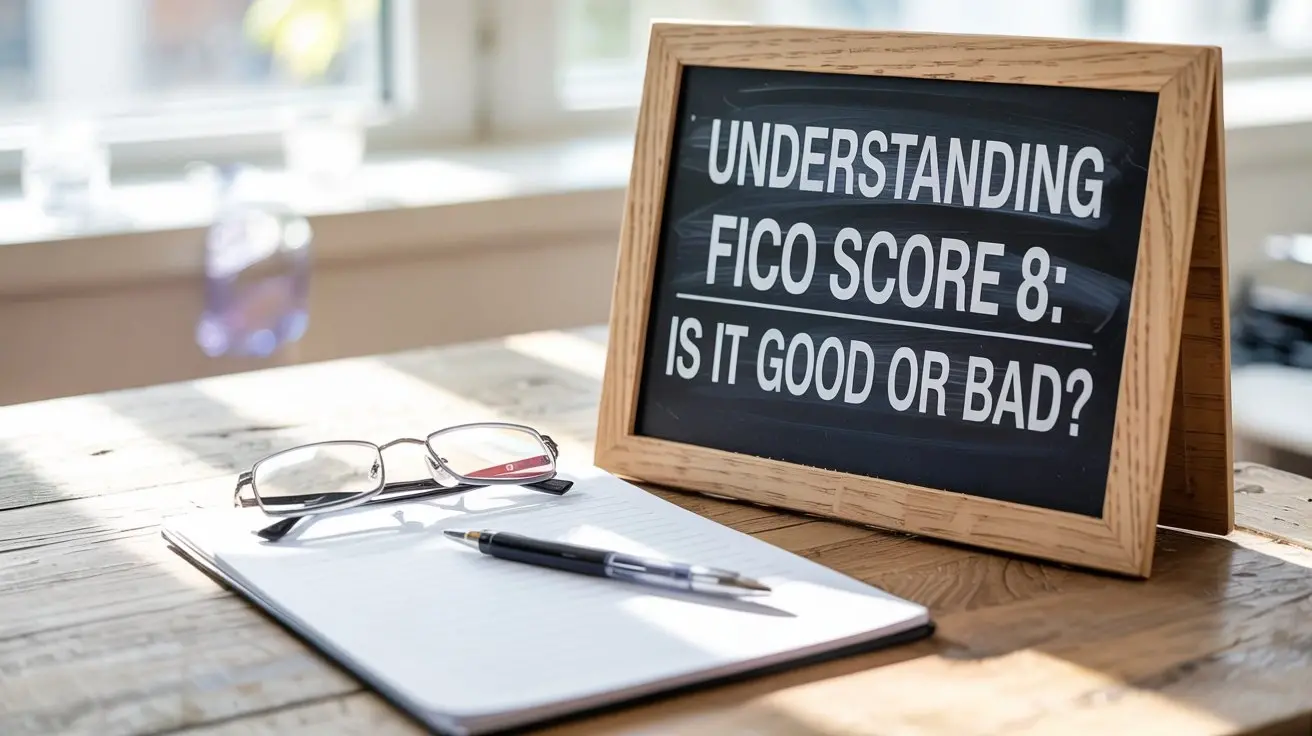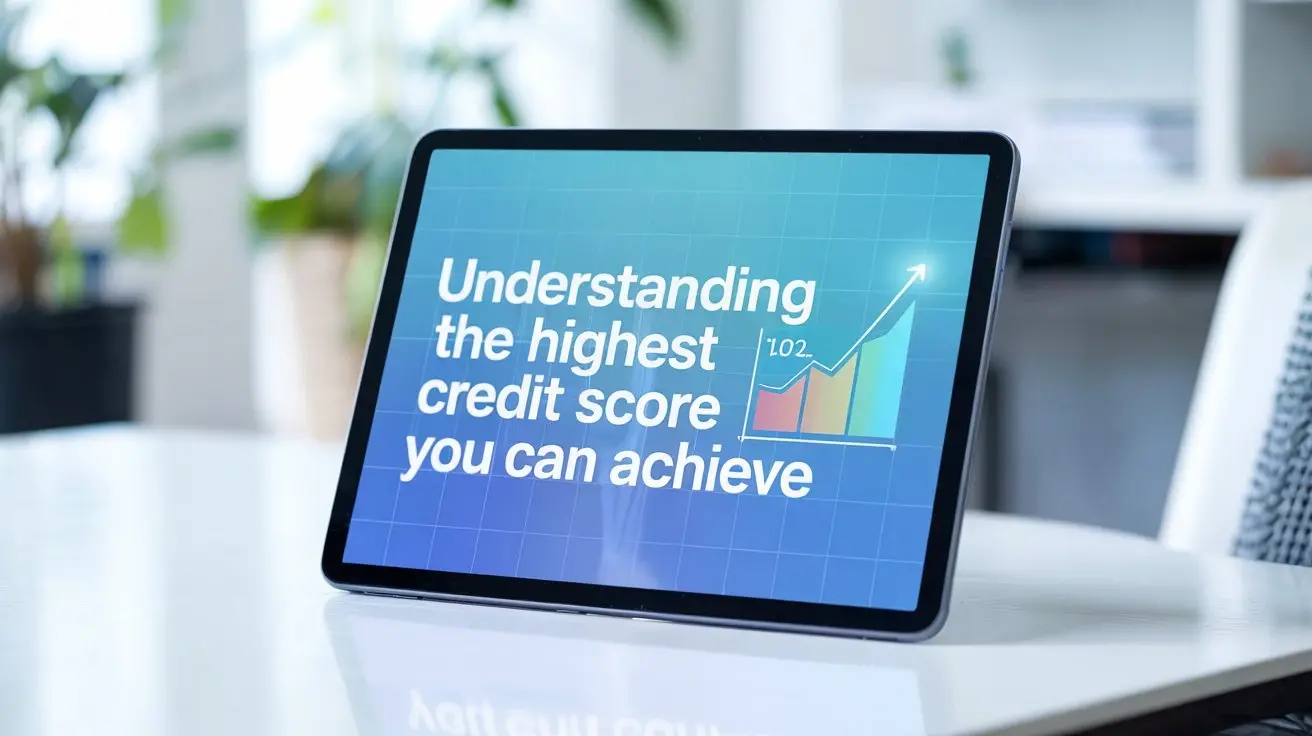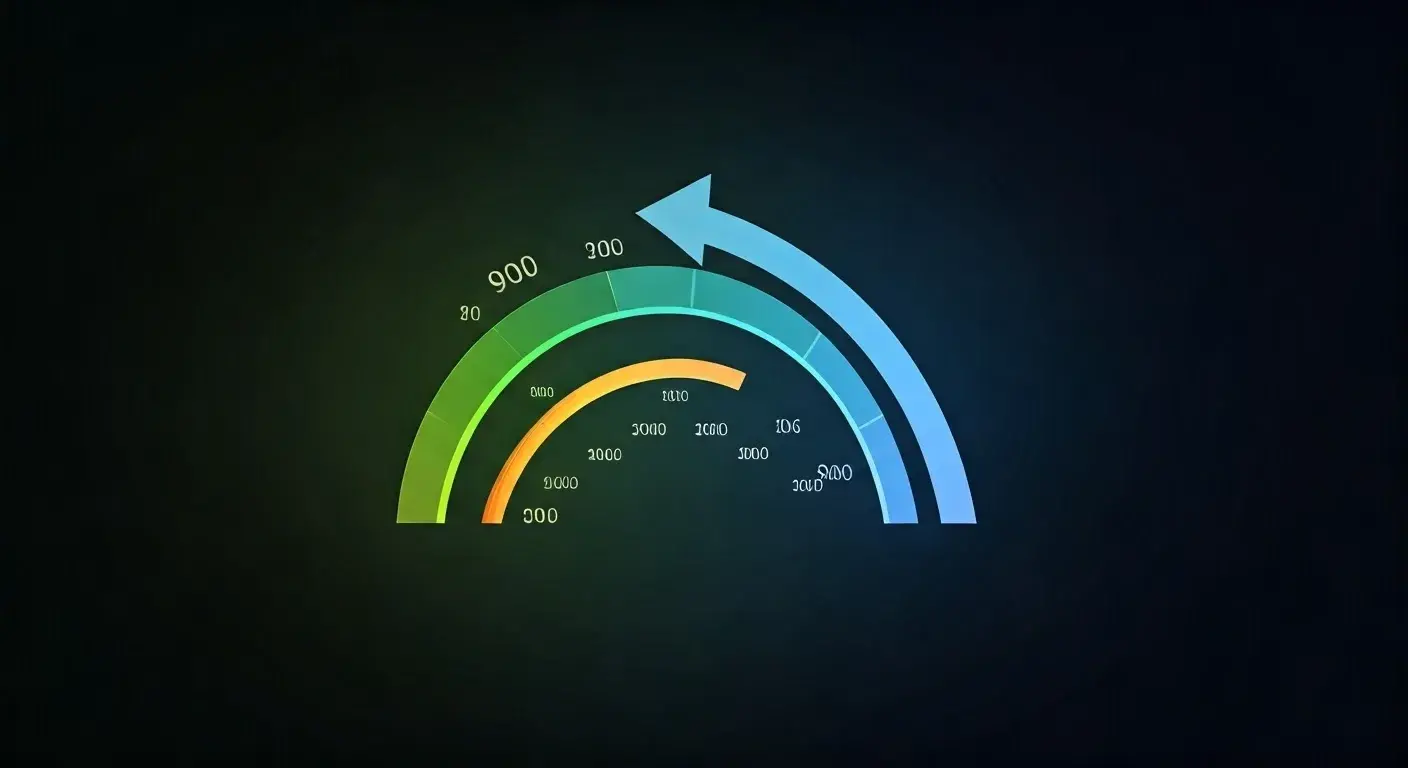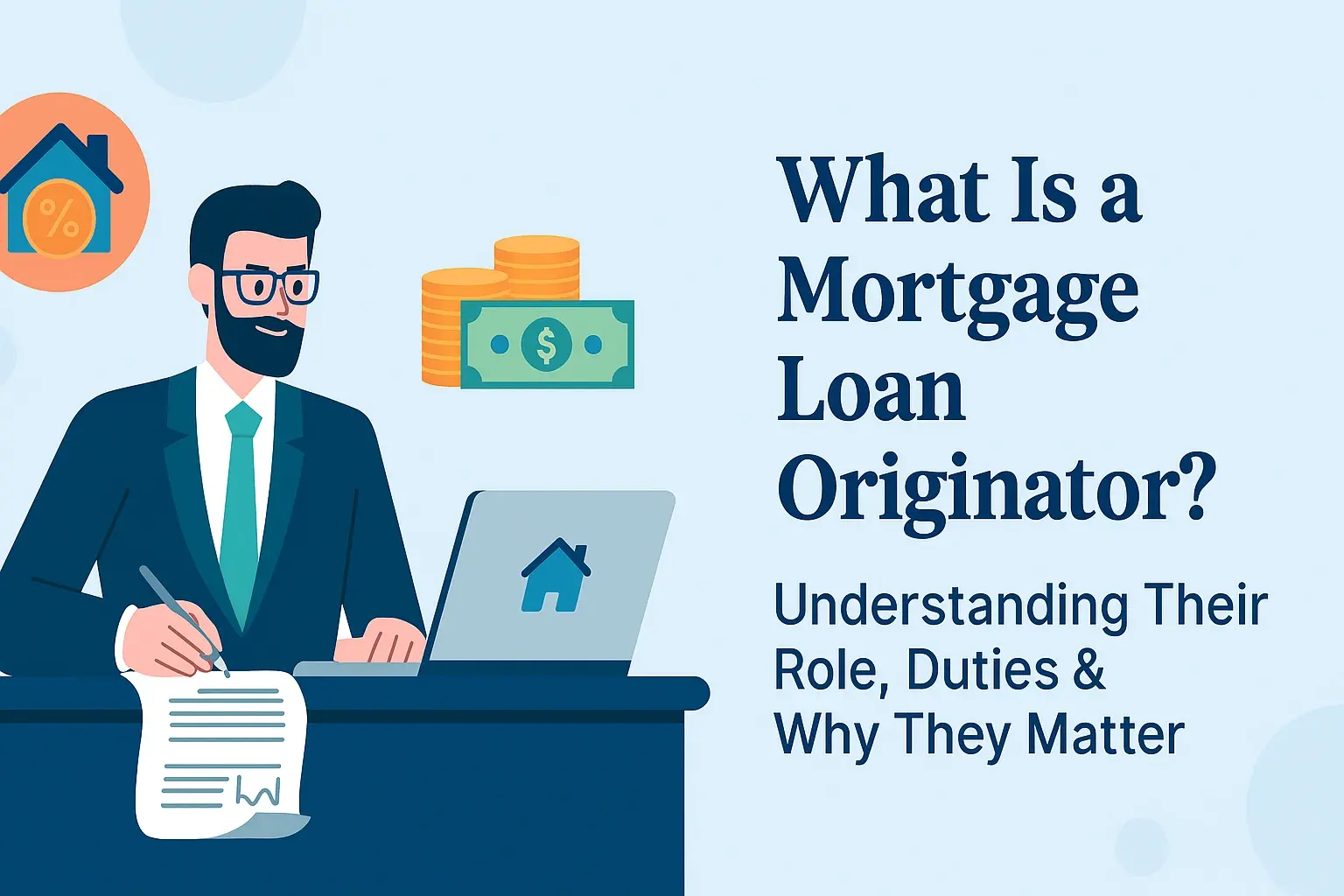-
Posted on: 21 Dec 2022

-
Yes, paying off collections can absolutely raise your credit score, but the impact isn't always immediate or dramatic. Understanding how this process works, the nuances of different collection types, and strategic approaches is key to maximizing its positive effect on your creditworthiness.
Understanding Collection Accounts on Your Credit Report
Collection accounts represent debts that have been severely delinquent and have been sold by the original creditor to a third-party debt collection agency. When a debt goes unpaid for an extended period (typically 120-180 days, depending on the creditor), the original creditor may decide to write it off as a loss. At this point, they might sell the debt to a collection agency for pennies on the dollar. The collection agency then attempts to recover the full amount owed, or a negotiated portion of it, from the consumer. These accounts are a significant negative mark on your credit report, signaling to lenders that you have a history of not meeting your financial obligations.
The presence of a collection account can drastically lower your credit score. According to FICO, a collection account can reduce your score by as much as 100 points or more, especially if it's a recent delinquency or a large amount. This negative impact stems from the fact that credit scoring models, like FICO and VantageScore, heavily weigh payment history and the amount of debt you carry. A collection account directly impacts both of these crucial factors. It indicates a severe lapse in payment history and often represents a significant outstanding debt, even if it's now being pursued by a different entity.
It's crucial to distinguish between a collection account and a late payment. A late payment, while negative, is usually less severe than a full-blown collection. A 30-day late payment will hurt your score, but a 120-day late payment that results in a collection account is far more damaging. Furthermore, the age of the debt and the statute of limitations for collection also play roles. While a collection account can remain on your credit report for up to seven years from the date of the original delinquency, the statute of limitations dictates how long a collection agency can legally sue you for the debt. This distinction is important because even if a debt is past the statute of limitations, it can still appear on your credit report and affect your score.
When a collection account appears on your credit report, it typically includes the name of the collection agency, the original creditor (sometimes), the amount owed, and the date it was sent to collections. It's essential to verify the accuracy of this information. Collection agencies are notorious for errors, such as reporting debts that have already been paid, debts that belong to someone else, or incorrect amounts. Before making any payment, you should always validate the debt to ensure it's legitimate and accurate. This process, known as debt validation, is a consumer right and a critical first step in managing collection accounts.
How Paying Off Collections Affects Your Credit Score
The impact of paying off a collection account on your credit score is a complex topic with varying outcomes. Historically, simply paying off a collection account would not remove it from your credit report. The negative mark would remain for the full seven-year period. However, modern credit scoring models, particularly newer versions of FICO and VantageScore, have evolved. While the collection account itself will still be listed on your report for its duration, paying it off can lead to a positive shift in your score, though the magnitude of this shift is not guaranteed and depends on several factors.
One of the primary ways paying off a collection can help is by addressing the "balance" aspect of your credit utilization ratio. While collection accounts are not typically factored into your credit utilization ratio in the same way as revolving credit (like credit cards), a zero balance on a collection account is viewed more favorably than an outstanding one. Lenders and scoring models prefer to see that you are actively managing and resolving your debts, including past-due ones.
Furthermore, paying off a collection account can prevent further negative reporting. If you don't pay, the collection agency might continue to report the delinquency, or even initiate legal action, which would result in further negative marks on your credit report (e.g., a civil judgment). By settling the debt, you stop this cycle of negativity.
The most significant potential for score improvement comes from the concept of "pay for delete." This is a negotiation tactic where you agree to pay the collection agency (either in full or a negotiated amount) in exchange for them agreeing to remove the collection account entirely from your credit report. If successful, this is the most impactful way to boost your score, as it removes the primary negative item. However, collection agencies are not obligated to agree to pay for delete, and their willingness varies. Newer credit scoring models are also less sensitive to the mere presence of a paid collection compared to an unpaid one, meaning the score increase from a paid-but-not-deleted collection might be modest.
It's also important to consider the age of the collection. If a collection account is nearing the end of its seven-year reporting period, paying it off might have a minimal impact, or even a slight negative one if the payment resets the clock on reporting (though this is rare and often a misconception). The older the debt, the less weight it typically carries in scoring models. Therefore, paying off a very old collection might not yield the dramatic results you'd hope for.
In summary, paying off a collection account can improve your credit score by:
- Demonstrating responsible debt management.
- Potentially removing the negative item through "pay for delete" negotiation.
- Preventing further negative reporting or legal action.
- Shifting the account status from "unpaid" to "paid," which is viewed more favorably.
However, the extent of the improvement is not guaranteed and depends heavily on the negotiation, the credit scoring model used, and the age of the debt.
Types of Collections and Their Impact
Not all collection accounts are created equal, and their impact on your credit score can vary based on the original creditor and the nature of the debt. Understanding these differences is key to strategizing your repayment.
Medical Collections
Medical debt has historically been a significant concern for consumers. However, recent changes have aimed to alleviate some of the burden. As of 2023, all paid and unpaid medical collections that fall below $500 are no longer included on credit reports. Furthermore, unpaid medical collections will not appear on credit reports until they have been outstanding for at least one year. This provides consumers with a substantial grace period to address these debts. Even for larger medical debts, once they are paid off, they are generally removed from credit reports, regardless of whether they were sent to collections. This is a significant policy shift designed to prevent medical emergencies from permanently damaging credit scores.
Impact: For debts under $500, the impact is now minimal to none. For larger debts, paying them off typically has a positive effect, and they are often removed entirely. However, if not paid, they can significantly lower scores.
Credit Card Collections
Credit card debt is one of the most common types of debt that ends up in collections. When a credit card account goes unpaid for an extended period, the card issuer will eventually sell the debt to a collection agency. These are typically unsecured debts, meaning there's no collateral involved.
Impact: Credit card collections have a substantial negative impact on credit scores. The amount of the debt and how recently it went into collection are major factors. Paying these off can lead to score improvement, especially if a "pay for delete" agreement is reached. However, even without deletion, a paid status is better than unpaid.
Student Loan Collections
Student loan debt is unique due to federal regulations. While defaulted federal student loans can be sent to a collection agency, they are typically managed by the Department of Education or its contracted servicers. Unlike other debts, federal student loans have specific rehabilitation and consolidation programs that can help borrowers resolve defaults without the same severe credit score damage as other types of collections. However, if the loan is severely delinquent and goes through external collection, it will negatively impact your credit.
Impact: Defaulted federal student loans can significantly harm credit scores. However, the government offers pathways to resolve these issues that may not involve a traditional collection agency reporting negative information for the full seven years, especially if you enter a rehabilitation program. Paying off defaulted loans through these programs can lead to score recovery.
Auto Loan/Mortgage Collections (Repossession/Foreclosure)
When you default on an auto loan or mortgage, the lender can repossess the vehicle or foreclose on the home. Often, the sale of the repossessed asset or foreclosed property doesn't cover the full amount owed. The remaining balance is called a "deficiency balance," and this deficiency can be sold to a collection agency.
Impact: These are considered very serious negative marks. A repossession or foreclosure itself is highly damaging. If a deficiency balance is then sent to collections, it compounds the negative impact. Paying off a deficiency balance can help, but the original event (repossession/foreclosure) will remain on your report for seven years, significantly affecting your score.
Utility Bill Collections
Unpaid utility bills (electricity, gas, water, internet, phone) can also be sent to collections. These are typically smaller amounts but can still impact your credit.
Impact: While generally less impactful than credit card or mortgage collections, utility collections can still lower your score. Some newer scoring models are starting to incorporate utility payment history positively, but negative reporting still occurs. Paying these off is generally beneficial, and they are often easier to negotiate for removal.
Comparison Table: Impact of Different Collection Types (Illustrative)
Collection Type Typical Impact on Score (Initial) Impact of Paying Off (Without Delete) Potential for "Pay for Delete" Medical (under $500) Minimal to None (post-2023) Often removed; minimal impact Not applicable for removal; usually handled differently Credit Card Significant Negative Moderate Positive High Student Loan (Federal Default) Significant Negative (if externally collected) Positive (via rehabilitation/consolidation) Variable; often handled by program Auto Loan/Mortgage Deficiency Very Significant Negative Modest Positive (original event remains) Moderate Utility Bill Moderate Negative Moderate Positive Moderate to High Note: Score impacts are estimates and vary based on individual credit profiles and scoring models.
Strategies for Paying Off Collections to Maximize Credit Score Improvement
Simply paying off a collection account is a good start, but to truly maximize the positive impact on your credit score, a strategic approach is essential. This involves careful planning, negotiation, and understanding the nuances of the collection process.
1. Verify the Debt First
Before paying anything, you must verify the debt. Collection agencies often purchase old debts and may not have complete or accurate information. You have the right to request debt validation within 30 days of their initial contact. This request should be in writing, sent via certified mail. The agency must provide proof that the debt is yours and that they have the legal right to collect it. This includes the original amount, the original creditor, and a breakdown of charges. If they cannot validate the debt, you are not obligated to pay, and it should be removed from your credit report.
2. Understand the Statute of Limitations
Each state has a statute of limitations for debt collection, which is the period during which a creditor or collector can legally sue you to recover the debt. This typically ranges from 3 to 10 years. It's crucial to know this date for your specific debt. Paying or acknowledging the debt can sometimes reset the statute of limitations in some states, allowing the collector to sue you again. However, the debt can still remain on your credit report for seven years from the original delinquency date, regardless of the statute of limitations for lawsuits.
3. Negotiate the Amount (Settlement)
Collection agencies often buy debts for a fraction of their original value. This gives you significant leverage to negotiate a settlement for less than the full amount owed. Aim to settle for 30-50% of the debt, though this can vary. Even if you can't afford to pay in full, settling for a lower amount and getting it marked as "settled for less than full balance" is better than an unpaid collection. However, be aware that settling for less than the full amount can still be reported as such and might have a slightly different impact than paying in full.
4. Prioritize Which Collections to Pay
If you have multiple collection accounts, prioritize them strategically:
- Oldest Collections: If a collection is nearing the end of its seven-year reporting period, paying it might not yield significant score improvement and could potentially reset the reporting clock (though this is debated and varies by scoring model). It might be better to let it age off your report.
- Largest Impact: Focus on collections that are causing the most damage. Newer collections or those with larger balances generally have a greater negative impact.
- Potential for "Pay for Delete": If a collection agency is willing to agree to "pay for delete," this should be a high priority, as removing the item entirely is the most effective way to boost your score.
- Original Creditor vs. Third-Party Collector: Sometimes, dealing with the original creditor directly (if they haven't sold the debt yet) can lead to better terms.
5. Get Everything in Writing
This is perhaps the most critical step. Any agreement you make with a collection agency—whether it's a settlement, a payment plan, or a "pay for delete" agreement—must be in writing and signed by both parties before you make any payment. This protects you from future disputes and ensures the terms are honored. The written agreement should clearly state the amount to be paid, the payment schedule, and the agreed-upon outcome (e.g., removal from credit reports).
6. Make Payments as Agreed
Once you have a written agreement, adhere to the payment schedule strictly. Missing a payment after agreeing to a plan can void the agreement and leave you in a worse position. If you agreed to a lump-sum settlement, make the payment promptly.
7. Monitor Your Credit Reports
After paying or settling the collection, regularly check your credit reports from all three major bureaus (Equifax, Experian, and TransUnion) to ensure the account status has been updated correctly and, if agreed upon, removed entirely. This process can take 30-60 days after the payment is processed.
Negotiating with Collection Agencies: Pay for Delete
The "pay for delete" negotiation is the holy grail for consumers dealing with collection accounts. It's a strategy where you offer to pay a debt collector, either in full or a negotiated settlement amount, in exchange for them agreeing to remove the collection account entirely from your credit reports. If successful, this can lead to a significant and rapid increase in your credit score because the primary negative item is no longer present.
Why "Pay for Delete" Works (or Doesn't)
Collection agencies buy debts for very little money. Their business model relies on recovering a portion of the debt, making a profit. For them, a guaranteed payment, even if less than the full amount, is often preferable to pursuing a debt with no guarantee of recovery, especially if the debt is old or the consumer is difficult to locate. Removing the item from your credit report is not typically a requirement for them, but they may agree to it as an incentive to secure a payment they might otherwise not receive.
However, it's important to understand that collection agencies are not legally obligated to agree to "pay for delete." Their willingness varies greatly. Some agencies have policies against it, while others are more flexible. It also depends on the specific collector you are dealing with and the age and type of debt.
How to Negotiate "Pay for Delete"
- Verify the Debt: As always, start by validating the debt. Ensure it's accurate and yours.
- Contact the Agency: Reach out to the collection agency. You can do this via phone or, preferably, in writing (certified mail) for documentation.
- State Your Intent: Clearly state that you are willing to pay the debt, but only if they agree to remove the collection account from all three credit bureaus (Equifax, Experian, and TransUnion) as part of the agreement.
- Be Prepared to Negotiate: They may push back. Be polite but firm. You can offer a settlement amount (e.g., 50% of the debt) as part of the "pay for delete" deal.
- Get it in Writing FIRST: This is non-negotiable. Before you send a single penny, you MUST have a written agreement from the collection agency stating that they will remove the collection account from your credit reports in exchange for your payment. This agreement should specify the payment amount and the timeframe for removal (typically 30 days after payment).
- Make the Payment: Once you have the signed agreement, make the payment as agreed.
- Follow Up: After the agreed-upon timeframe, check your credit reports. If the collection account is still there, contact the collection agency with your written agreement and demand they honor the terms. If they refuse, you may need to file a dispute with the credit bureaus, providing your agreement as evidence.
Potential Challenges
- Refusal: The agency may simply refuse to agree to "pay for delete." In this case, you can still try to negotiate a settlement for less than the full amount, which will still improve your score compared to an unpaid collection, but without the full benefit of removal.
- Non-Compliance: Even if they agree, they might not follow through. This is why the written agreement is paramount.
- Misinformation: Some consumers mistakenly believe that simply paying the debt automatically removes it. This is rarely the case without explicit "pay for delete" agreement.
While challenging, successfully negotiating a "pay for delete" can be one of the most effective strategies for quickly improving your credit score after dealing with collections.
Timing is Everything: When to Pay Off Collections
The decision of when to pay off a collection account is as crucial as the decision to pay it at all. The timing can significantly influence the impact on your credit score. It's not always a case of "the sooner, the better."
Factors Influencing Optimal Timing
- Age of the Debt: Credit reporting agencies track negative information for seven years from the date of the original delinquency. As a collection account ages, its negative impact on your score tends to diminish. Newer collections (within the first 1-2 years) have a more potent negative effect than older ones.
- Proximity to the 7-Year Mark: If a collection account is within a year or two of falling off your credit report, paying it off might not be beneficial and could even be detrimental. Some older scoring models or specific interpretations could view a payment on a very old debt as a re-acknowledgment, potentially resetting the reporting clock. While this is less common with modern FICO 9, FICO 10, and VantageScore 3.0/4.0, it's still a consideration. The benefit of letting it age off might outweigh the score increase from paying it.
- "Pay for Delete" Negotiation: If you are aiming for a "pay for delete" agreement, the timing is dictated by your negotiation success. You pay *after* you have a written agreement.
- Financial Readiness: You should only pay off a collection when you have the funds available and it fits into your overall financial plan. Prioritizing essential bills and building an emergency fund should come first. Paying a collection at the expense of basic needs is not a sound financial strategy.
- Statute of Limitations: While the reporting period is seven years, the statute of limitations for lawsuits varies by state. If the debt is nearing the end of its statute of limitations, and you haven't been sued, you might consider if paying it is worth the risk of potentially restarting that clock (depending on state law).
When Paying Might Be Less Beneficial
- Very Old Debts: As mentioned, if a collection is almost seven years old, letting it expire from your report is often the best strategy. The score improvement from paying might be minimal compared to the relief of it disappearing entirely.
- Small Amounts on Older Debts: If you have a very old, small collection, the effort and potential score increase might not be worth the cost.
- When Funds are Needed Elsewhere: If paying the collection means neglecting other critical financial obligations or preventing you from building savings, it's not the right time.
When Paying is Highly Recommended
- Newer Collections: If the collection is relatively recent (1-3 years old), paying it off can significantly help your score, especially if you can negotiate "pay for delete." This removes a potent negative factor sooner.
- Before Applying for Major Credit: If you are planning to apply for a mortgage, auto loan, or other significant credit in the near future, paying off outstanding collections can improve your chances of approval and potentially secure better interest rates.
- To Prevent Further Action: If the collection agency is threatening legal action and the debt is still within the statute of limitations, paying or settling might be necessary to avoid a judgment, which is even more damaging to your credit.
- When You Can Secure "Pay for Delete": The promise of complete removal makes paying almost any collection worthwhile, provided you have the written agreement.
Ultimately, the decision requires a careful assessment of the collection's age, your financial situation, your credit goals, and your negotiation leverage. Always consult your credit reports and understand the specifics of your situation before making a payment.
What Happens After You Pay Off a Collection?
Once you've paid off a collection account, either in full or through a settlement, several things can happen, and it's crucial to know what to expect to ensure the process benefits your credit report as intended.
1. Updated Credit Report Status
The most immediate change you should see on your credit report is the status of the collection account. Instead of being reported as "unpaid" or "delinquent," it should be updated to reflect that it has been "paid," "settled for less than full balance," or, in the ideal "pay for delete" scenario, it should be entirely removed.
If "Pay for Delete" was successful: The collection account will disappear from your credit reports entirely. This is the most impactful positive change.
If you paid in full: The account will be updated to show a zero balance and a "paid" status. It will remain on your report for the remainder of its seven-year reporting period, but the "paid" status is viewed more favorably than "unpaid."
If you settled for less than the full amount: The account will be updated to show a zero balance and "settled for less than full balance." This is better than unpaid but may have a slightly different impact than paying in full, depending on the scoring model.
2. Credit Score Impact
The effect on your credit score can vary significantly:
- "Pay for Delete": This typically results in the most substantial and immediate score increase because the negative item is removed.
- Paid Collection (No Delete): Newer credit scoring models (like FICO 9, FICO 10, and VantageScore 3.0/4.0) often ignore paid collections altogether or give them much less weight than unpaid ones. This can lead to a moderate score increase. Older scoring models might still penalize the presence of the collection, even if paid, resulting in a smaller or negligible score improvement.
- Settled Collection (No Delete): Similar to a paid collection, the impact depends on the scoring model. It's generally better than unpaid, but "paid in full" might be viewed slightly more favorably.
It's important to remember that credit scores are influenced by many factors. Paying off a collection is just one piece of the puzzle. Other factors like your overall credit utilization, payment history on other accounts, and the length of your credit history will also play a role.
3. Timeframe for Updates
Credit bureaus typically update information monthly. After you make a payment, it can take 30-60 days for the collection agency to report the updated status to the credit bureaus, and for the bureaus to reflect these changes on your credit reports. This is why consistent monitoring is essential.
4. Potential for Re-aging (Rare but Possible)
In very rare instances, if a payment is made or the debt is re-acknowledged incorrectly, some older systems might have incorrectly "re-aged" the debt, effectively resetting the statute of limitations or reporting period. Modern credit reporting practices and regulations aim to prevent this, but it's a reason why having everything in writing is crucial.
5. Verification of Removal (for Pay for Delete)
If you negotiated "pay for delete," you must actively check your credit reports after the agreed-upon timeframe. If the collection is still present, you'll need to contact the collection agency with your written agreement and potentially file a dispute with the credit bureaus, providing the agreement as proof.
6. Impact on Future Applications
Having a paid or settled collection is generally viewed more favorably by lenders than an unpaid one. It demonstrates that you've taken steps to resolve past financial issues. If the collection was removed entirely via "pay for delete," the positive impact is even greater. This can improve your chances of loan approval and potentially lead to better interest rates.
It's always advisable to obtain updated credit reports from AnnualCreditReport.com (which provides free reports from each bureau weekly in 2025) after a payment is made to ensure accuracy.
Potential Pitfalls and How to Avoid Them
While paying off collections can be a positive step, several pitfalls can hinder your progress or even worsen your situation. Being aware of these risks and taking proactive measures can help you navigate the process successfully.
Pitfall 1: Paying Without Verification
Risk: You might pay a debt that isn't yours, is already paid, is inaccurate, or is past the statute of limitations and the collector has no intention of suing. Collection agencies can make mistakes or engage in fraudulent practices.
How to Avoid: Always validate the debt first. Send a written request for debt validation within 30 days of the collector's first contact. Do not make any payment until you have confirmed the debt's legitimacy and accuracy.
Pitfall 2: Agreeing to "Pay for Delete" Verbally Only
Risk: The collection agency agrees verbally to remove the item but then fails to do so after you pay. Without written proof, you have no recourse.
How to Avoid: Get ALL agreements in writing before making any payment. This includes settlement amounts, payment plans, and especially "pay for delete" clauses. Ensure the written agreement clearly states the removal from all three credit bureaus.
Pitfall 3: Paying an Old Debt That's About to Age Off
Risk: You pay off a collection that is very close to its seven-year reporting limit. In some older scoring models, this payment could be interpreted as re-acknowledging the debt, potentially resetting the reporting clock or offering minimal score improvement compared to letting it expire.
How to Avoid: Check the date of the original delinquency on your credit report. If the collection is within 1-2 years of falling off, carefully weigh the potential score increase against the benefit of it disappearing entirely. Consult with a credit counselor if unsure.
Pitfall 4: Missing Payments on a Payment Plan
Risk: You agree to a payment plan but miss a payment. This can void your agreement, leaving the debt unpaid and potentially allowing the collector to resume aggressive collection efforts or even sue.
How to Avoid: Only agree to a payment plan you are certain you can adhere to. Set up automatic payments or reminders to ensure you don't miss a due date. If you anticipate difficulty making a payment, contact the collection agency *before* the due date to discuss options.
Pitfall 5: The Payment Resets the Statute of Limitations
Risk: In some states, making a payment or acknowledging a debt can legally reset the statute of limitations for lawsuits. This means the collector could then sue you for the debt again, even if it was previously time-barred.
How to Avoid: Understand the statute of limitations in your state for debt collection. If the debt is well past the statute of limitations and you have not been sued, be cautious about making any payment that could be interpreted as re-acknowledging the debt, unless you have a "pay for delete" agreement in place.
Pitfall 6: Paying Without Addressing the Root Cause
Risk: You pay off a collection but don't address the underlying financial habits that led to it. This can result in accumulating more debt and more collections in the future.
How to Avoid: Use the experience as a learning opportunity. Create a budget, track your spending, build an emergency fund, and develop healthier financial habits. Consider seeking advice from a non-profit credit counseling agency.
Pitfall 7: Not Monitoring Credit Reports After Payment
Risk: You pay the debt, but the collection agency fails to update your credit report correctly, or the "pay for delete" agreement is not honored. Without monitoring, you might miss these errors.
How to Avoid: Regularly check your credit reports from Equifax, Experian, and TransUnion for at least 60-90 days after payment. Use AnnualCreditReport.com for free reports. If discrepancies are found, dispute them with the credit bureaus immediately, providing all supporting documentation.
Pitfall 8: Falling for Scams
Risk: Scammers may pose as legitimate collection agencies, demanding payment for debts you don't owe or using high-pressure tactics. They might ask for payment via gift cards, wire transfers, or other unusual methods.
How to Avoid: Be wary of unsolicited contact, especially if it's aggressive or demanding. Verify the identity and legitimacy of any collection agency. Never pay with methods that are difficult to trace. If something feels off, disengage and do your own research.
By being vigilant and informed, you can avoid these common pitfalls and ensure that paying off collections genuinely contributes to improving your credit health.
Real-World Examples and Statistics (2025)
Understanding the theoretical impact of paying off collections is one thing, but seeing real-world examples and current statistics can provide a clearer picture of what consumers can expect in 2025.
Example 1: The "Pay for Delete" Success Story
Sarah had a $1,200 medical collection from 2022 that was negatively impacting her ability to get approved for a car loan. After validating the debt, she contacted the collection agency and negotiated a "pay for delete" agreement for $700. She secured the agreement in writing, paid the $700, and within 45 days, the collection account was completely removed from her Equifax, Experian, and TransUnion reports. Her credit score, which was around 620, jumped to 675 within two months, allowing her to get approved for a car loan with a reasonable interest rate.
Statistic Relevance: This illustrates the power of "pay for delete." Studies from credit reporting agencies and financial institutions in 2025 indicate that removing a significant negative item like a collection can boost scores by 40-100+ points, depending on the individual's credit profile and the age of the debt.
Example 2: Settling for Less Than Full Balance
John had a $3,500 credit card collection from 2021. He couldn't afford to pay it in full but wanted to improve his credit before applying for a mortgage. He negotiated a settlement for $1,800. He obtained a written agreement stating the debt was settled for less than the full amount and would be reported as such. After paying, the collection status changed to "settled for less." His credit score, which was 590, increased to 630. While not as dramatic as a "pay for delete," this improvement was enough to make him a more viable candidate for mortgage pre-approval, although with a slightly higher interest rate than someone with no collections.
Statistic Relevance: In 2025, FICO and VantageScore models are increasingly de-emphasizing paid or settled collections, especially older ones. While the impact is less than removal, a settled collection is significantly better than an unpaid one. Consumers who settle collections often see score increases in the range of 20-50 points, depending on other credit factors.
Example 3: Paying Off an Old Collection
Maria had a $500 utility collection from 2018. It was nearing its seven-year reporting limit. She decided to pay it off to "clean up" her report. She paid the full amount. The account was updated to "paid." Her credit score, which was 680, saw a minimal increase of about 5-10 points. In this case, the score improvement was negligible because the debt was old and its negative impact had already waned significantly. If she had waited another year, it would have fallen off her report entirely.
Statistic Relevance: For collections older than 5 years, the average score increase from simply paying them off (without deletion) is often less than 20 points. In many cases, the benefit is minimal, reinforcing the strategy of letting very old collections age off the report.
Current 2025 Statistics and Trends
- Medical Debt Changes: Since the widespread implementation of policies removing smaller medical collections ($500 or less) and delaying reporting for others, the impact of medical debt on credit scores has lessened considerably for many consumers. However, larger unpaid medical debts still pose a significant risk.
- Scoring Model Evolution: Newer versions of FICO (FICO 9, FICO 10) and VantageScore (3.0, 4.0) place less emphasis on paid collections. This means that while paying is generally better than not paying, the score boost might be less dramatic than under older scoring models if the collection is not removed.
- Average Score Impact: According to recent analyses by credit bureaus and financial data providers in early 2025, an unpaid collection can lower a credit score by an average of 50-100 points. A paid collection, if not removed, might only improve the score by 10-30 points, whereas a removed collection (via pay for delete) can yield 40-100+ points.
- Negotiation Success Rates: While specific percentages vary by agency and debt type, estimates suggest that consumers have a 30-60% chance of successfully negotiating a settlement for less than the full amount, and a 15-30% chance of achieving a "pay for delete" agreement, especially with persistent and well-documented negotiation.
- Consumer Debt Trends: With rising inflation and economic uncertainties in 2025, the number of consumers falling behind on payments and potentially having debts sent to collections remains a concern, making effective debt management strategies more critical than ever.
These examples and statistics highlight that while paying off collections is generally beneficial, the strategy and timing are crucial for maximizing the positive impact on your credit score.
Conclusion
The question "Can Paying off Collections Raise Your Credit Score?" is met with a resounding, albeit nuanced, "Yes." While the presence of a collection account is a significant negative factor, addressing it strategically can indeed lead to credit score improvement. The most impactful outcome is achieved through successful "pay for delete" negotiations, where the collection is removed entirely from your credit report, often resulting in substantial score increases. However, even without removal, paying off or settling a collection account is generally viewed more favorably by credit scoring models than leaving it unpaid. This updated status signals responsible debt management and can contribute to a moderate score boost, particularly with newer scoring systems that de-emphasize paid collections.
Key takeaways emphasize the importance of verification, written agreements, and strategic timing. Always validate the debt before paying, and never agree to any terms, especially "pay for delete," without written confirmation. Consider the age of the debt; very old collections nearing their seven-year reporting limit might be best left to expire naturally. For newer collections, prompt action, ideally coupled with negotiation, is advisable. Remember that paying off collections is just one component of a healthy credit profile. Maintaining a good payment history on other accounts, managing credit utilization effectively, and building a long credit history remain fundamental to achieving and maintaining excellent credit.
Actionable Recommendation: If you have collection accounts on your credit report, start by obtaining your free credit reports from AnnualCreditReport.com. Carefully review each collection, noting the original creditor, date of delinquency, and amount owed. Prioritize negotiating with agencies for older, more impactful debts, aiming for "pay for delete" agreements. Always get your agreements in writing before making any payment. By taking these informed steps, you can effectively manage your collections and pave the way for a stronger credit future.











